Solar stations have become considerably more accessible today, and many competitors are offering their solutions on the market. While a few stand out from the crowd, it must be admitted that most copy each other. But the solution I'm presenting to you today goes beyond a simple solar station, as it adds a charging station and intelligence, and is therefore particularly aimed at electric vehicle owners. Indeed, the SolarMobilsolution, in addition to reinjecting the electricity produced into the home to reduce the electricity bill, is equipped with a smart box that optimizes the use of the energy produced and the charging of an electric vehicle. Let's take a closer look…
Discovering the SolarMobil solar station
The package I received is rather large, and for good reason: it contains a large photovoltaic panel measuring 183x104cm. Here, there's a single panel, but the French manufacturer also offers solutions with two or four panels.
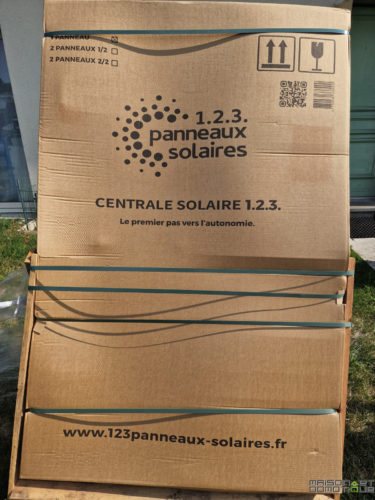
Inside, there are several components: the 425Wp panel, equipped with four mounting legs and its micro-inverter, mounting screws and wall plugs, an extension cord, an energy management box, and finally, a smart plug.
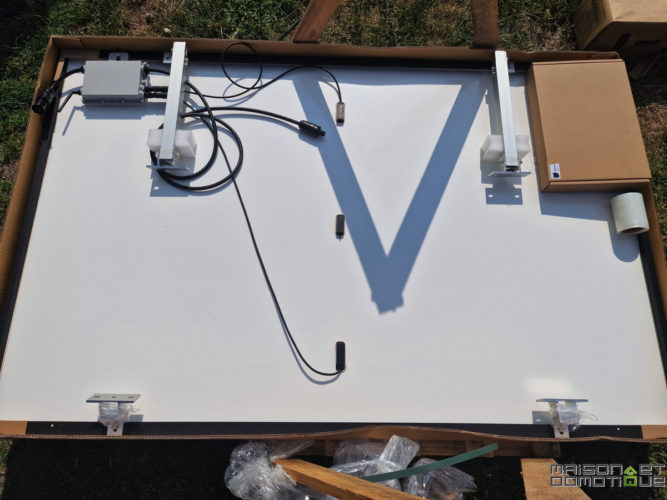
Four aluminum mounting legs are attached to the photovoltaic panel: two short ones at the front, and two longer, adjustable-length ones at the back.
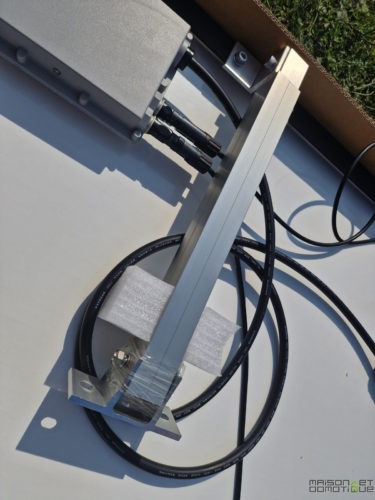
Conveniently, the longer legs contain markings indicating the corresponding tilt angle. This makes it possible to adjust the tilt according to the seasons, to always achieve optimal production (I invite you to read our article on the orientation and tilt of solar panels here).The assembly is held together by two large screws: an Allen key will be needed to tighten and loosen, but it won't budge; it's solid! Each leg has a mounting bracket with two holes:
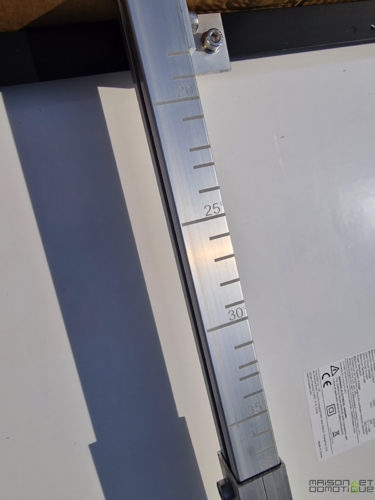
Unlike other models we've already seen, this SolarMobil panel must be secured, as the four legs are independent, and it won't be very stable without them. It can be fixed to the ground or to the wall. If you want to keep the station relatively mobile, you can attach each leg to a concrete slab, such as a patio slab, for example.
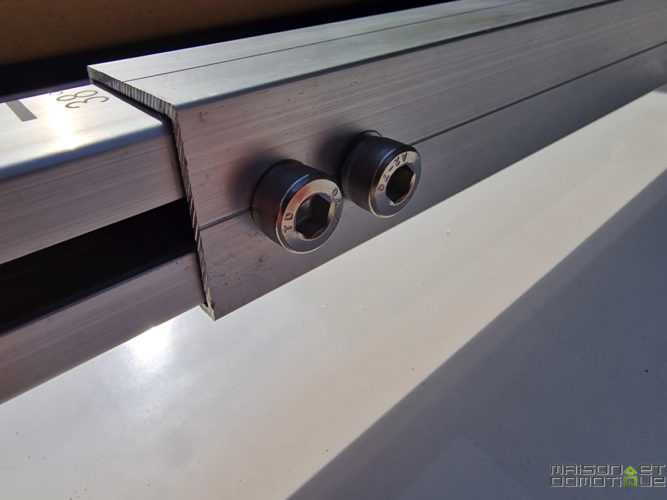
The 425Wp photovoltaic panel is from Trina Solar, the oldest Chinese manufacturer in the field, offering products with excellent value for money. It's also worth noting that it's also the first manufacturer to have obtained dual environmental protection certification. A detail that's always good to know!
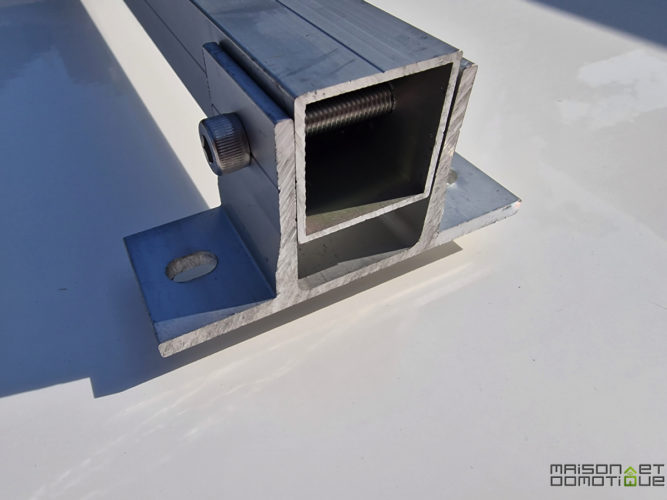
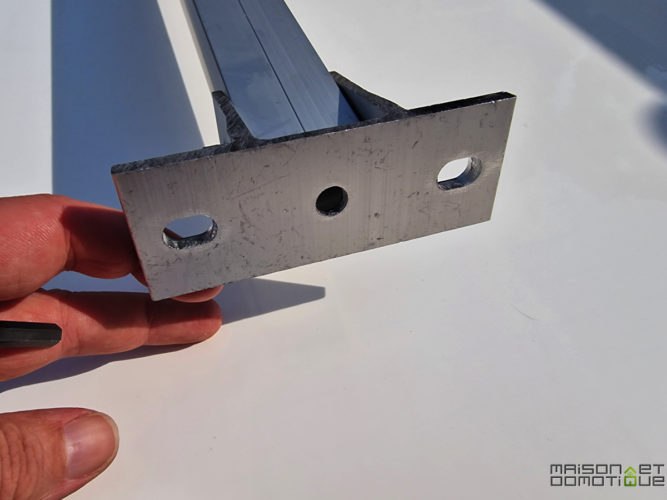
A relatively classic design in the field
This panel uses half-monocrystalline cells, divided into two panels. The power generated by each cell and the current flowing through them are thus halved, which reduces the cell's temperature. This reduces the risk of hot spots (an area reaching an abnormally high temperature, resulting in a decrease in cell efficiency).
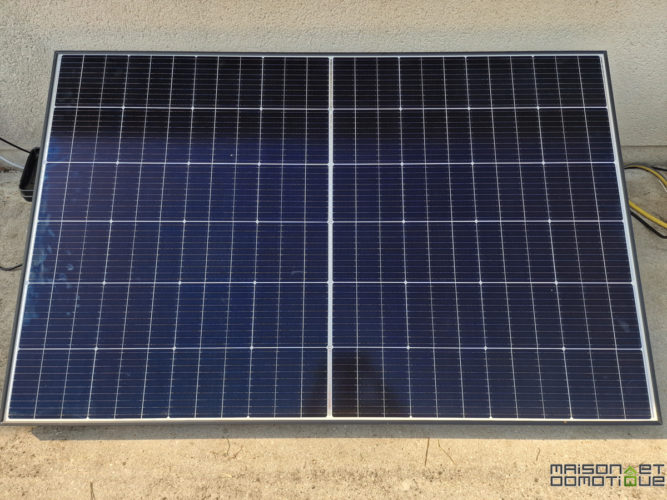
All the wiring and electronics are located under the panel, including, of course, the microinverter. Here, we have a 500W Deye microinverter (model SUN500G3-EU-230, with 25V triggering), with a Wi-Fi connection (but which will not be used in this configuration).
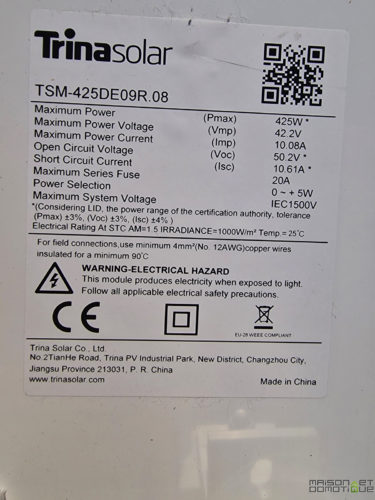
The panels and inverters are guaranteed for 25 years.
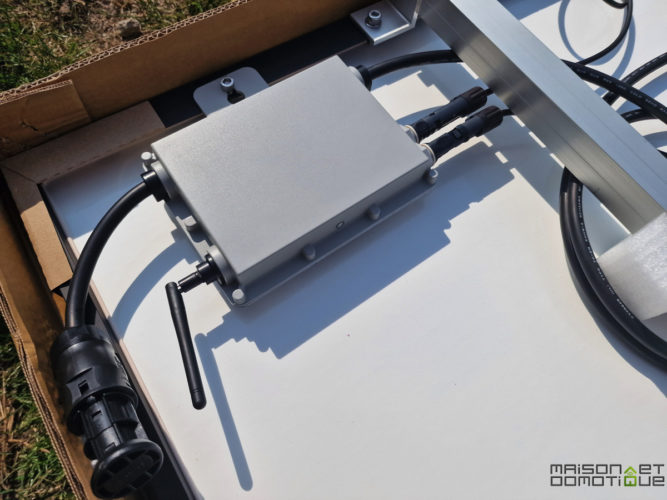
Only the electrical outlet and its 3m cable protrude from the system. Note that the inverter also has a socket for another extension kit, allowing multiple panels to be connected together.
The panels are easily connected via this single socket.
Then comes the real novelty of this system: the SolarMobil box and its connected socket!
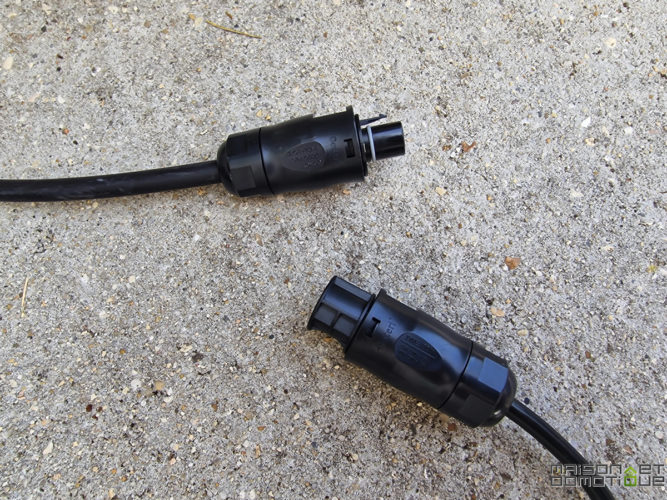
This is a waterproof (IP65) electrical box containing all the electrical safety features (30mA residual current device for personal protection, and a 16A circuit breaker for equipment protection) as well as two Wi-Fi remote switches for monitoring production and consumption, as well as activating or deactivating the output.
On the right, the two Wi-Fi remote switches.
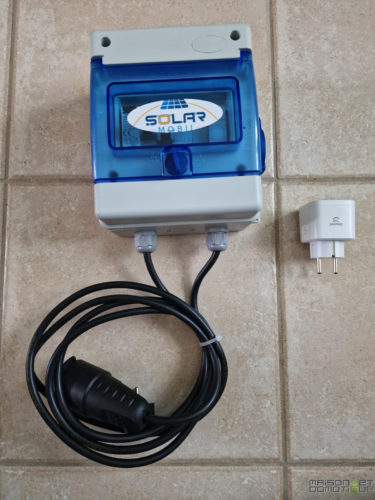
Consumption monitoring? Indeed, this box is capable of monitoring the electricity production provided by the solar panel, as well as the electricity it will deliver via the electrical outlet located on the side:
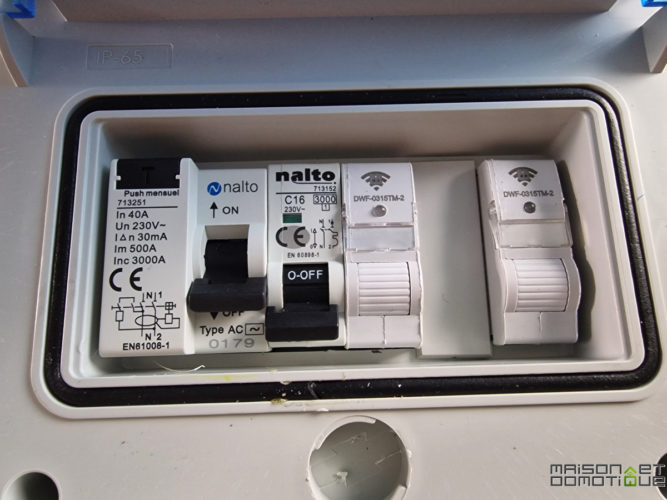
The box is perfectly protected so it can spend its life outdoors, whatever the weather conditions:
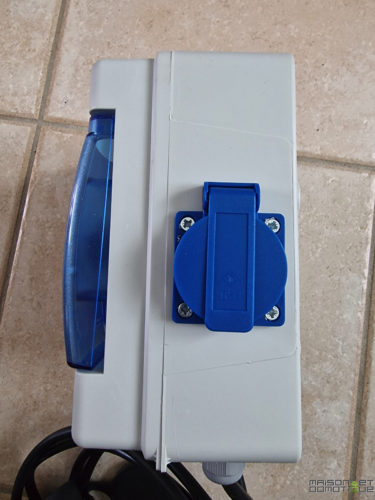
All connections are completely waterproof.
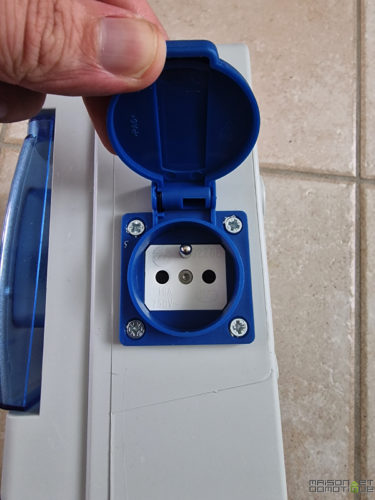
This box has a female and a male plug: the solar station will plug into the female plug, and the male plug into a household outlet.
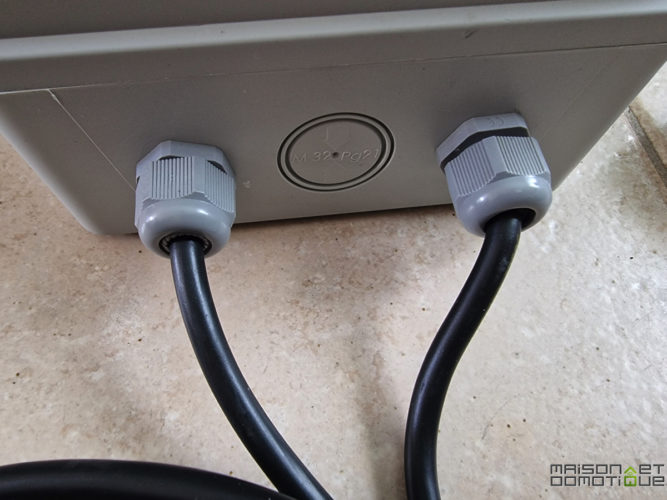
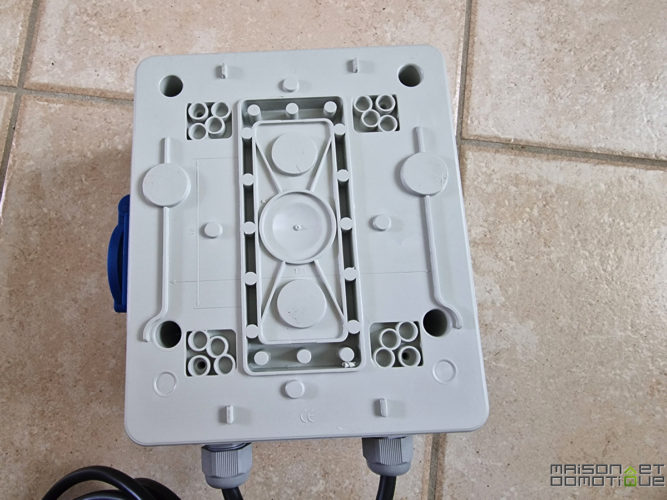
This one is from Eightree, but the important thing to know is that it's compatible with Tuya, the now well-known home automation device manufacturer.
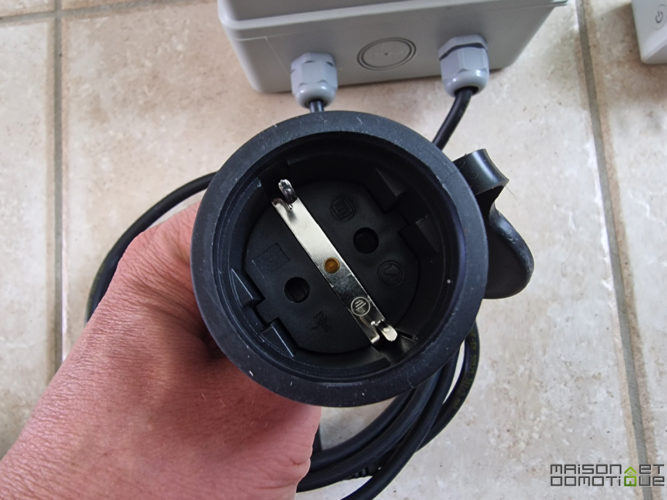
It has a local control button:
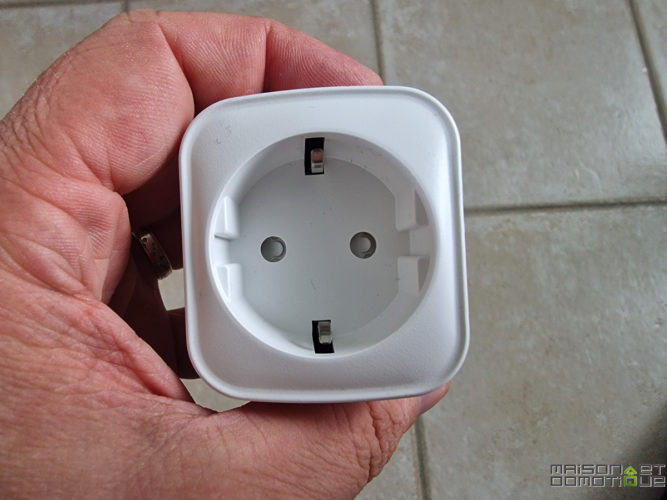
If the female side is a Shuko format socket (compatible with the majority of our devices in France), the male side is fully compliant with our French sockets.
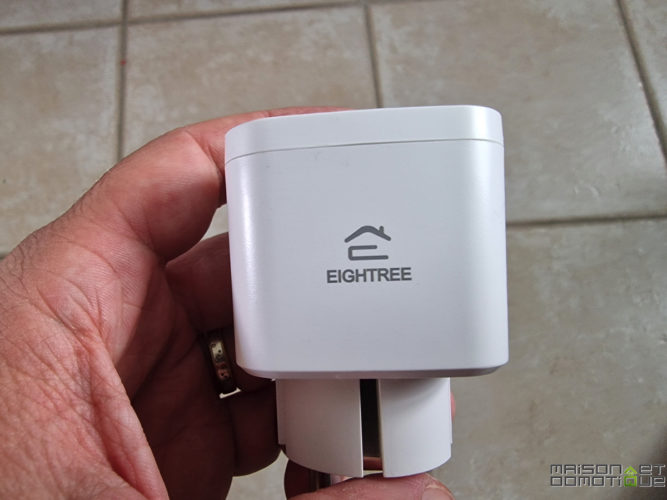
As you will undoubtedly have noticed, this socket is not waterproof, because unlike the other models seen previously, it is not here to measure the production of the solar station. Production monitoring is done directly through the electrical box. This connected socket is present here to control other devices depending on the station's energy production: starting the swimming pool pump, air conditioning, washing machine, etc.
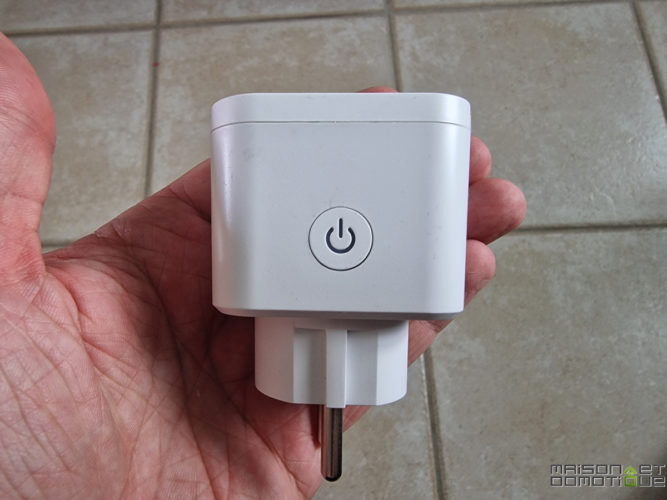
So let's move on to the installation of this SolarMobil station…
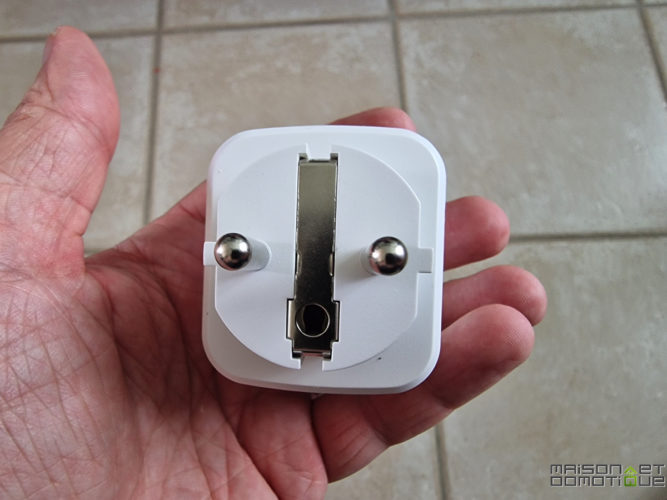
Installation of the SolarMobil solar station
Installing the SolarMobil station is relatively simple, as you simply unfold the mounting legs and fix them, either in concrete slabs, on the ground, or on a wall. However, you will need to use a drill to carry out the fixing, which will take an amateur DIYer a few minutes. It's a little more restrictive than the Plug&Play stations already seen, which simply unfold and place on the ground. In return, however, we will have a more stable station, which will not risk turning over at the slightest gust of wind, especially since the fixing legs are really robust.
We position the solar station in the desired location, well exposed to the sun, ideally facing south. We adjust the height of the panel to give it the right inclination. As mentioned above, the SolarMobil station can be positioned at several angles. It's a simple and ingenious system, as it allows the panel's inclination to be modified depending on the season: generally around 27°, 35°, and 42° (for ground-mounted installation). We know that the sun is lower in winter than in summer, so the optimal position of the panel will vary.
The part that particularly interests us is the SolarMobil Box: this will be inserted between the solar station's socket and the home's power outlet:
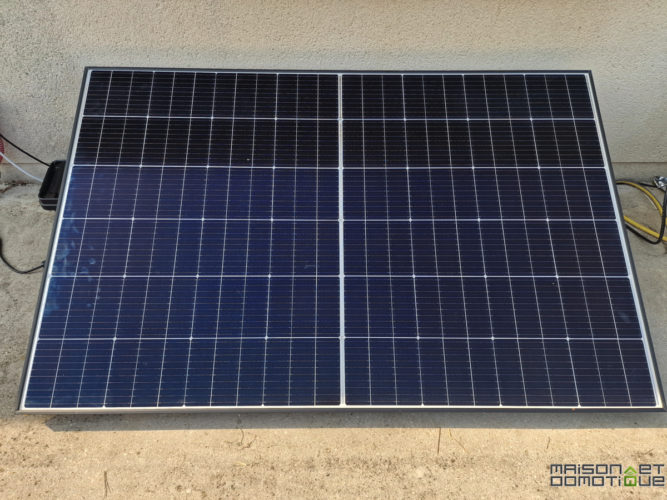
So, we have solar station -> SolarMobil box -> power outlet. The SolarMobil box can then be mounted on a wall if desired, to leave the outlet easily accessible for charging your electric car or bicycle, for example. Here it's simply placed next to the station, awaiting more permanent installation:
From now on, our panel begins producing electricity, and our nearest devices begin consuming this “free” electricity.
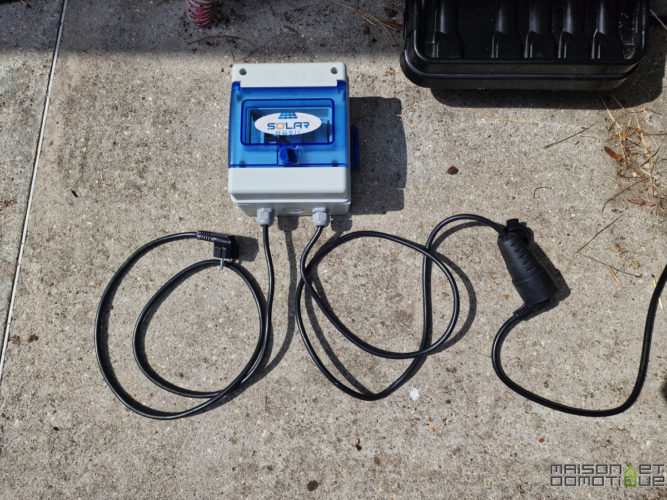
Installation takes barely 20 minutes, the time it takes to drill holes to properly secure the solar panel. This is an important step, as the panel isn't very stable on its legs without any mounting hardware! It can be mounted on a concrete floor, a wall, or even on the lawn if the legs are secured to concrete slabs (like those used for patios and driveways). You simply need to find a spot with good sun exposure, ideally facing south, without any shade, to optimize solar production.
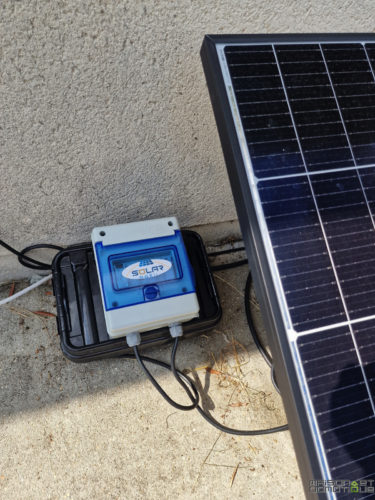
The mobile app
Last step: install the mobile app to track your production and, above all, turn on the smart feature. The SmartLife app is listed, but we know that the official Tuya app is compatible and offers many more possibilities. SmartLife is, in fact, only an OEM Tuya app. But Tuya offers a broad home automation ecosystem, which can even interconnect with third-party systems, such as Jeedom or Home Assistant, for example. Both apps, however, offer the same interface. Whether on iOS or Android, simply install it and create a user account.
A request to add a device is made. The app automatically detects compatible devices nearby. All you have to do is indicate the Wi-Fi network you want to join, give them a name, and that's it. Here, we have three devices to add: the production meter, the consumption meter, and the connected plug:
The production meter will allow you to monitor solar production in real time, via the “Energy” tab. Below, you'll find the monthly history, as well as daily details by clicking on it.
The same principle applies to the consumption meter and the connected plug. It's also possible to enable or disable the SolarMobil plug or the connected plug.
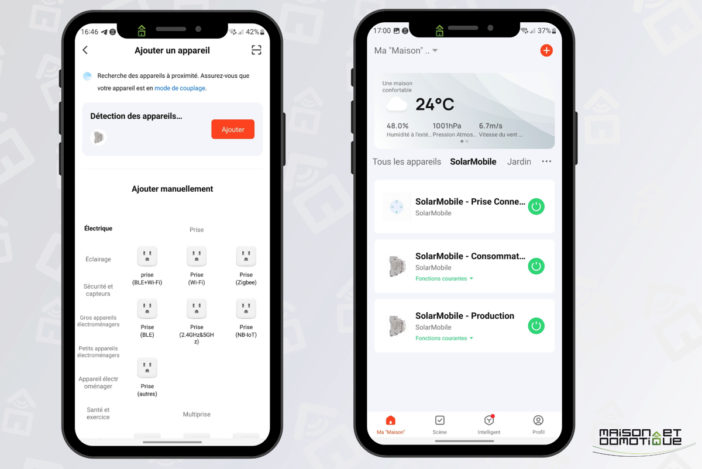
Moreover, the scheduling function allows you to enable or disable these two plugs depending on the days and times you want:
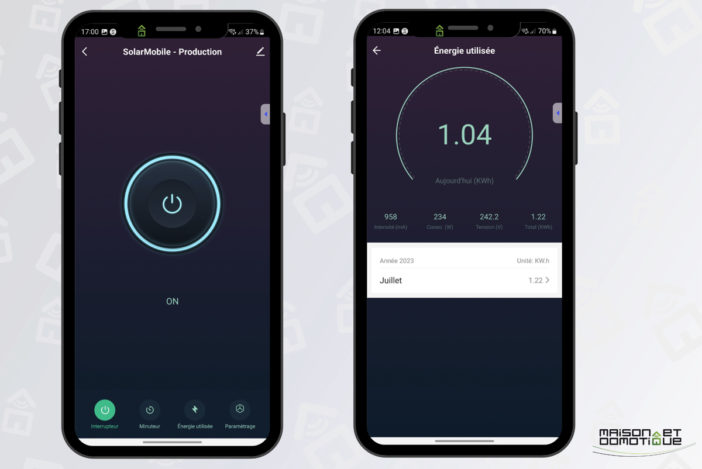
This can be particularly useful for turning on a device during certain hours. For example, I use the connected plug to control my pool pump from 9 a.m. to 8 p.m. During these hours, I generally have good solar production, and the pool pump must run during the day to ensure clear water. This allows you to automate the pool pump without additional equipment.
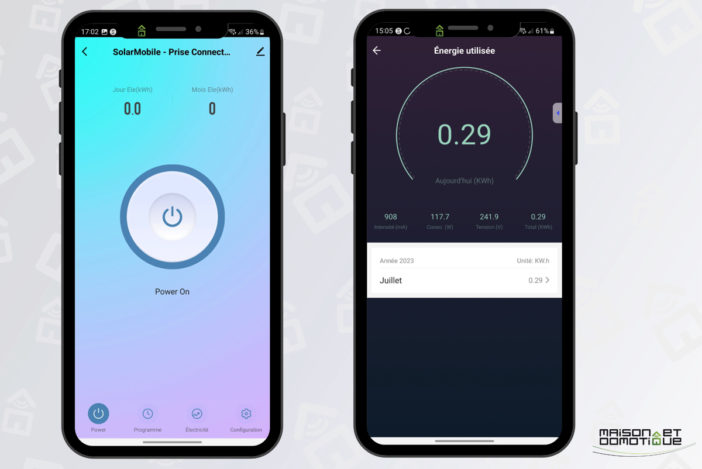
But the application also allows for more elaborate scenarios, based on different conditions. And this is where it's possible to make the system smarter to optimize the use of solar production:
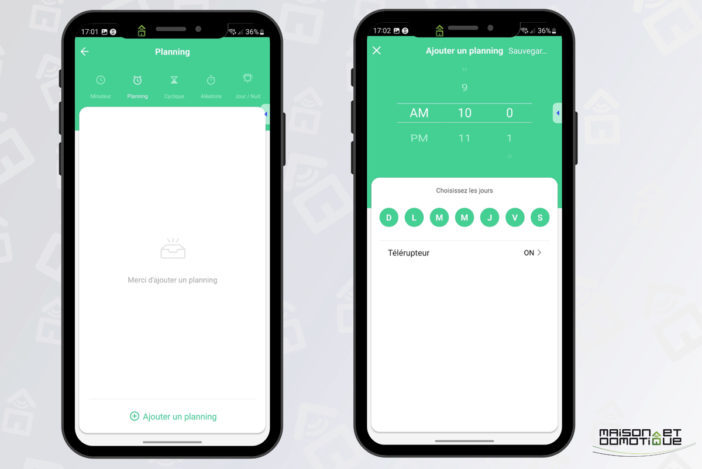
We can use the production meter as a trigger. Here, if the power reaches at least 100W:

Then I activate the connected outlet, which will charge my Ecoflow battery:

We can similarly trigger the charging of our electric car, for example, to take advantage of solar production, or to power any other device: washing machine, pump, etc. Another scenario will cut off the power if solar production is no longer sufficient.
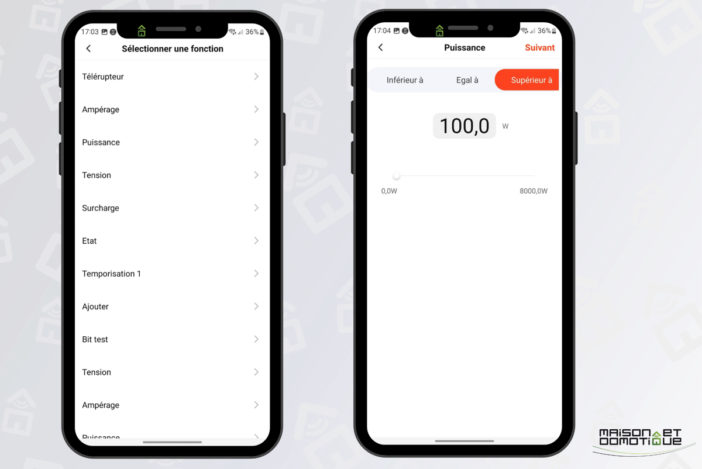
In use, the available outlet is really practical: for example, I charge my Gogobest GF750 electric bike directly, taking advantage of solar production. Charging my bike costs me nothing! SolarMobil solar station: how does it work? If you're new to this type of self-consumption station, you might be wondering how it works? Solar panels that plug directly into an electrical outlet? Doesn't plugging a power source into an outlet that's already powered risk tripping the meter? And so on. You should know that an electrical outlet works both ways. When you plug your toaster into the outlet, you draw current. If you plug a solar panel into the same outlet, the current flows back the other way to your meter. If it encounters an appliance that consumes energy along the way, it will offset all or part of it. If you produce more than you consume, the surplus will benefit your nearest neighbors.
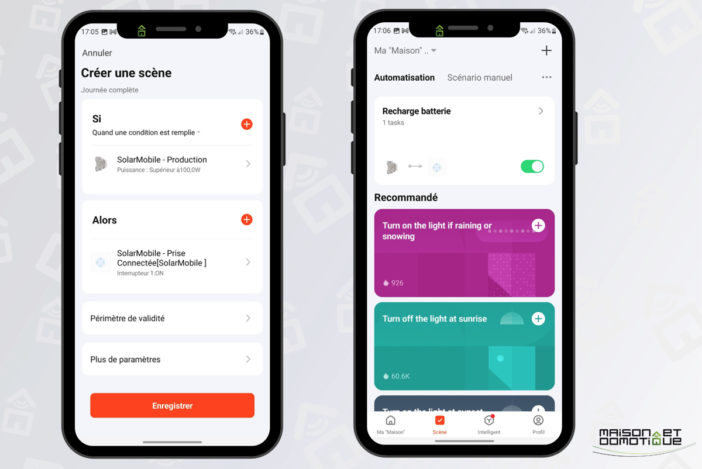
In fact, the system works on two levels.
First of all, the inverter synchronizes with the electrical grid to operate. Therefore, it won't work in the event of a power outage, and it can't work in an isolated location that isn't connected to the electrical grid (like my property deep in the woods, for example). On the other hand, this also prevents electrocution if you touch the kit's plug: as long as it isn't synchronized with a mains outlet, no current will flow. So, there's no risk for children either. Then, the system relies on a simple rule of physics: electrons take the shortest path. Like any fluid, in fact. In practice, solar panels capture the sun's rays and transform the photons into electrons. The inverter, synchronized to the electrical grid, injects the solar electrons into the home's electrical circuit. The solar electrons diffuse and power the nearest electrical devices that are consuming electricity at the same time. Thus, for each solar electron produced and consumed by a household appliance, it is an electron from the electricity network which does not pass through the meter, and which is therefore not billed.
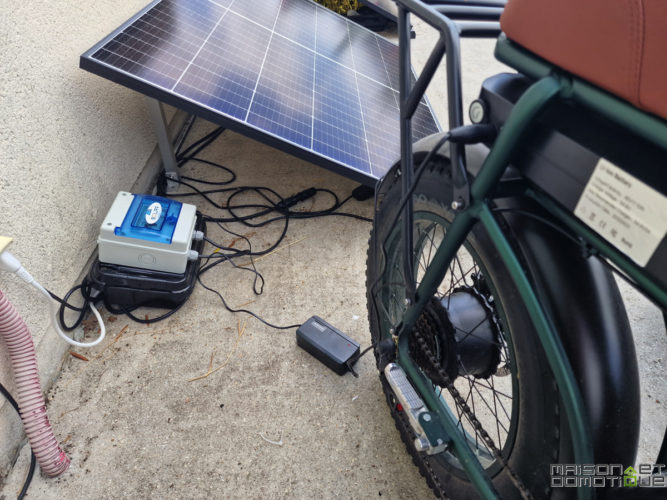
The goal isn't to produce as much electricity as we consume each day, since that would require a much larger and more expensive installation. The goal is to eliminate your home's “electrical tail.” The electrical tail is your home's minimum electricity consumption, which is present no matter what, even when no one is home. It corresponds to the consumption of the refrigerator, internet box, home automation box, VMC, appliances on standby, etc. If you don't turn on any specific appliance, and you take a look at your electricity meter, you'll see that it still displays an electricity consumption that easily reaches 300W in general. The consumption tail represents 10 to 20% of your annual energy needs, or between 300 and 1500 kWh per year! This is the consumption we're trying to eliminate with the SolarMobil solar station. If your electrical load exceeds the 300 to 400W typically found in most homes, it's possible to install multiple stations (up to 4 per circuit breaker/power line).
In SolarMobil's case, the goal is not only to eliminate the electrical load, but also to charge your electric vehicle. Clearly, this won't be possible with a single panel, which is why the manufacturer is promoting its solution with 2 or 4 panels, allowing for 850 to 1700Wp of power.
However, depending on the weather and the vehicle being charged, it's highly likely that the stations won't produce enough power to fully support the vehicle. Most electric cars require 6A of power (around 1400W) to initiate charging. A Tesla, for example, will refuse to charge if it's supplied with less than 1000W. In this case, the SolarMobil Box will automatically manage the electricity supply by drawing the surplus from the general grid to provide the power needed to charge the vehicle.
In the absence of sunlight, and therefore no solar production, the box uses the Enedis network to charge the vehicle. It's also possible to adjust to off-peak hours by creating a scenario on the app to optimize charging costs.
Finally, in the case of solar production, but without vehicle charging, the energy produced is injected into the home and used by connected devices. The connected plug can then automatically activate certain devices to take advantage of this free electricity: The SolarMobil Box's smart energy manager uses free solar electricity to power equipment that consumes electricity continuously (refrigerator, freezer, internet box, etc.) or occasionally, depending on your preferences, such as your heat pump, water heater, washing machine, or dishwasher! Another example scenario:
According to the manufacturer, smart operation improves the solar station's profitability by 30% compared to a conventional solar station. Indeed, a conventional solar station will produce all it can when the sun is out and inject it into the home, regardless of the appliances present. If production exceeds the home's needs, the energy produced is sent free of charge to the general grid.
With the SolarMobil Box and its connected plug, the charging of the electric vehicle and the power supply of certain devices will be triggered based on solar production, to maximize its utilization. This is where the system goes further than the stations previously discussed. And since it's part of the Tuya ecosystem, it's of course possible to add other connected plugs to control multiple devices.
Moreover, remember that the Tuya system can be easily integrated with an external home automation system, such as Jeedom, Home Assistant, Gladys, etc. It will therefore be possible to trigger many other actions based on solar production if desired.
And what about the regulations?
The strong point of the SolarMobil solar station is that it can be installed anywhere, without complicated formalities. If the panels are installed on the ground or less than 1.80 meters high, no declaration is required at the town hall. The only thing left to do is to sign a Self-Consumption Agreement Without Injection (CACSI) with Enedis, the company that manages the electricity grid. The declaration can be made directly online at https://connect-racco.enedis.fr/prac-internet/login/.
The big question: profitability
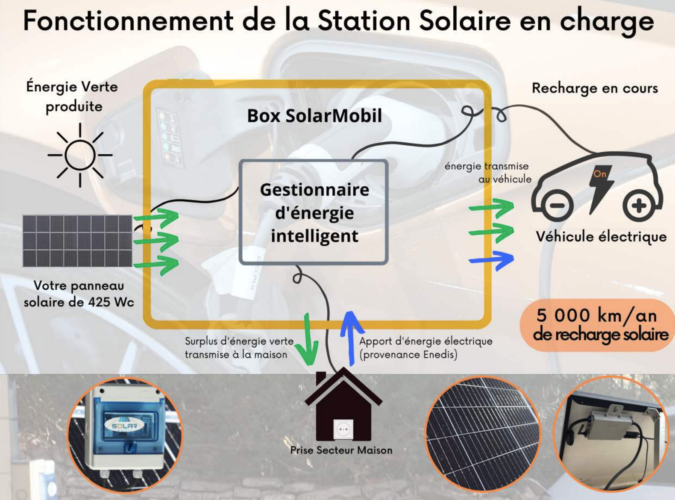
Inevitably, this is the big question that comes up every time: what about profitability?
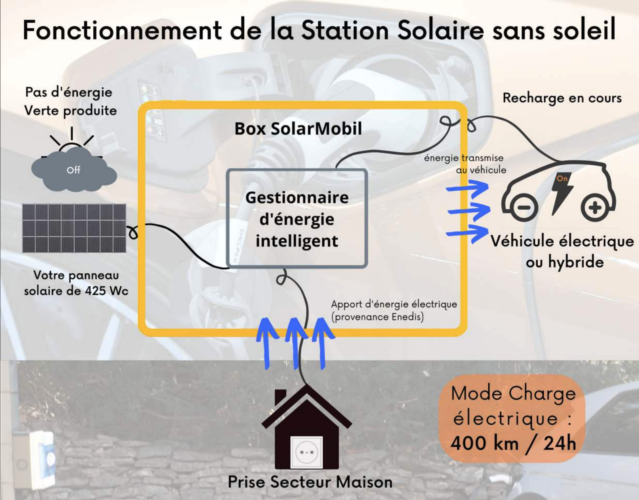
This will, of course, depend on your geographic location and the orientation of your panels. This website provides an estimate based on your address.

As we saw in previous tests, we can expect a payback period of 4 to 7 years depending on the geographic location. SolarMobil reduces this payback period thanks to its intelligent management: while a large portion of the electricity produced is generally wasted on other oversized solutions, SolarMobil allows for better optimization of this use by automatically activating certain devices. The manufacturer gives an example:
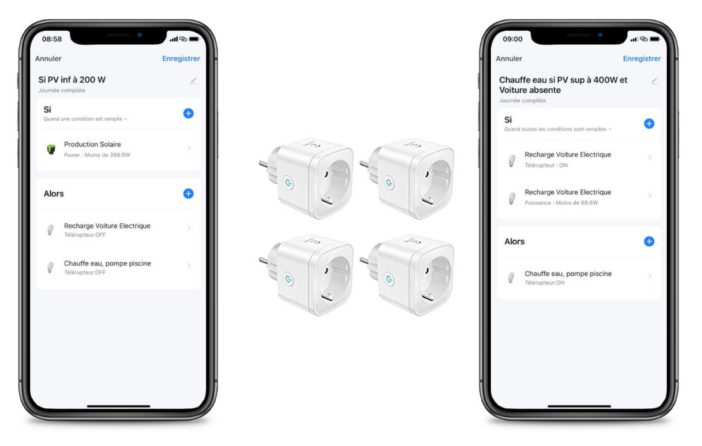
If we take a 1700Wp kit, consisting of 4 panels, at €2,895
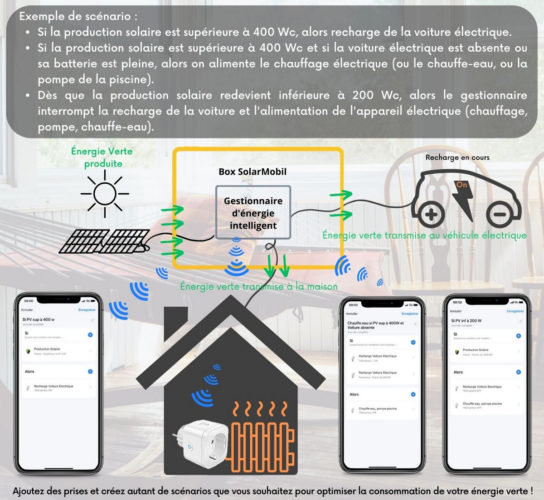
over a minimum lifespan of 25 years, i.e., a cost of €116/year
and an electricity saving of €580/year
then the kit is paid back in just 5 years.
This is without taking into account the increase in the price of electricity, which is likely to continue in the coming years. Despite the investment, which may seem significant, the return on investment remains relatively rapid. Conclusion
Sunology, Beem, Sunethic, and Supersola are just a few of the solar station manufacturers we've had the opportunity to test. But there are a plethora of them today, generally copying the major players. SolarMobil stands out from the crowd by offering a smart solution. The solar panel itself, even though it offers one of the highest power outputs on the market, remains relatively “standard.” The SolarMobil Box, which adds the charging station and system intelligence, is the solution's strong point, truly optimizing the use of solar energy. It offers many advantages:
an additional layer of security for the electrical installation a vehicle charging station intelligence in the use of solar energy
The icing on the cake: it’s not just limited to the manufacturer’s stations! If you already have a solar station, such as Sunology, Beem, Sunethic, etc. it is entirely possible to buy the SolarMobil Box alone and connect it between the solar station and the mains socket. You can therefore add this intelligent box to any existing system, and thus optimize the use of your solar production!
Another advantage of this type of product: it can be installed whether you are an owner or a tenant. Installation is so simple that it's quick to unplug the panel and fold it up to move it to a new home. It is therefore an investment that will follow you, unlike an installation integrated into the roof.
In short, I really like the principle of this new solar station, which goes further than just producing electricity. Solar stations have become popular over the last two years to reduce electricity bills. But intelligent systems are the next step. And SolarMobil already offers everything you need.

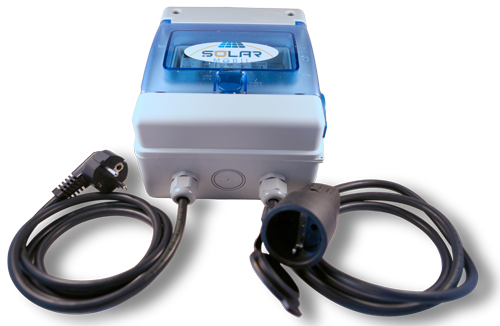
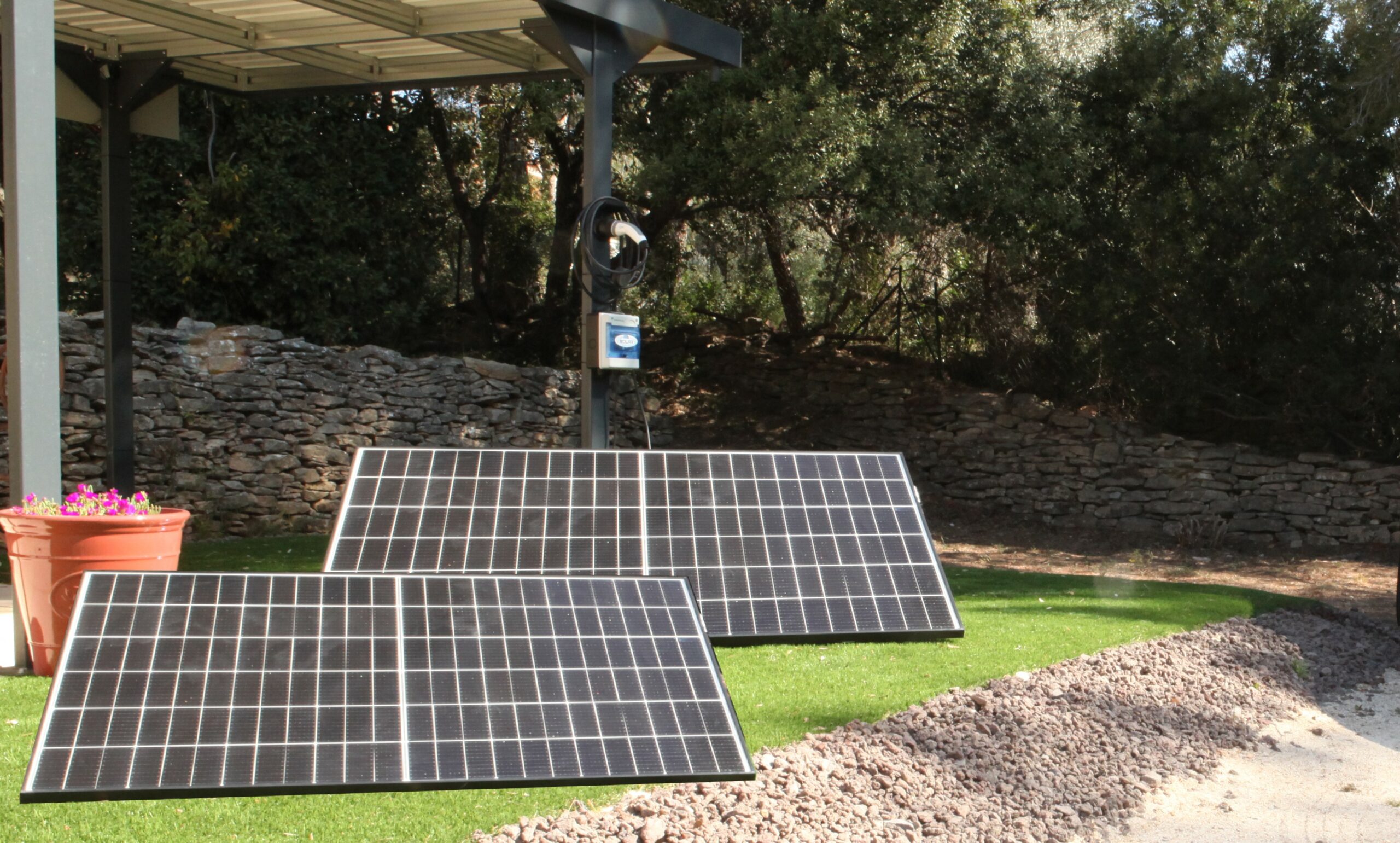
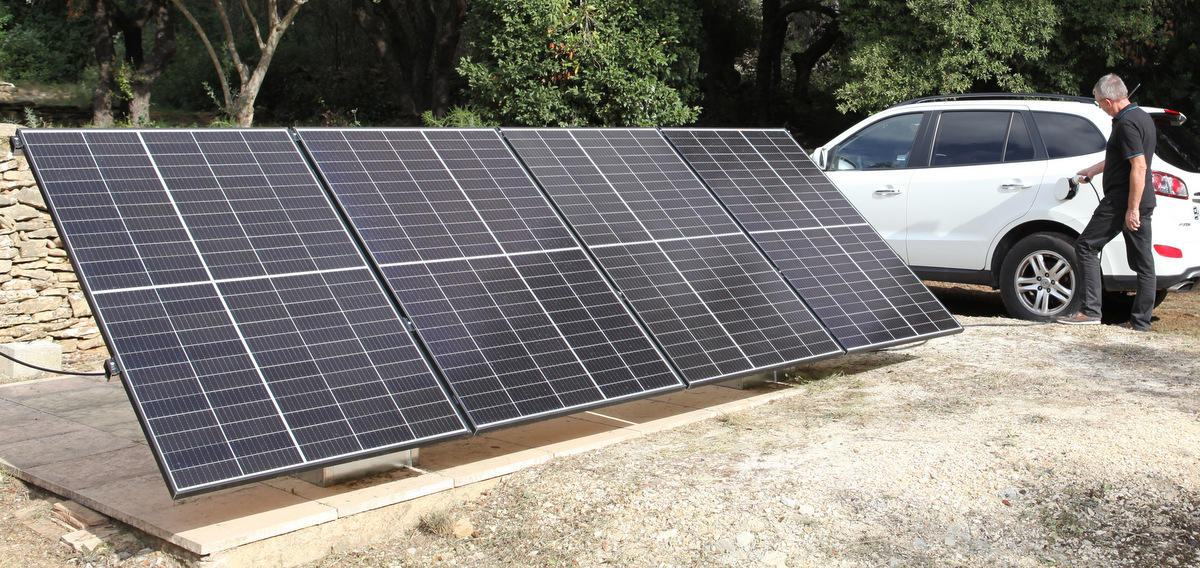
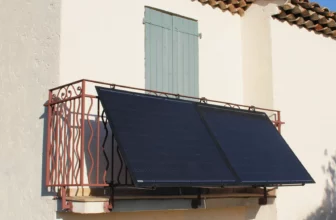
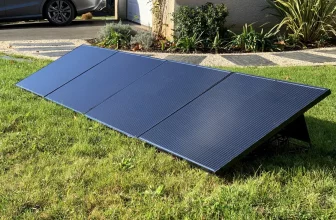
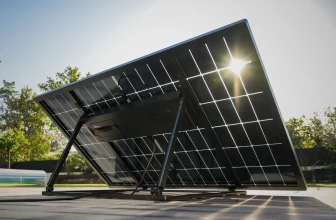
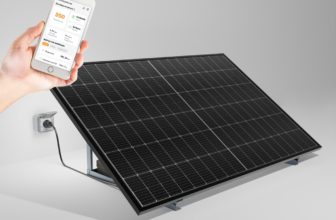

Please remain courteous: a hello and a thank you cost nothing! We're here to exchange ideas in a constructive way. Trolls will be deleted.